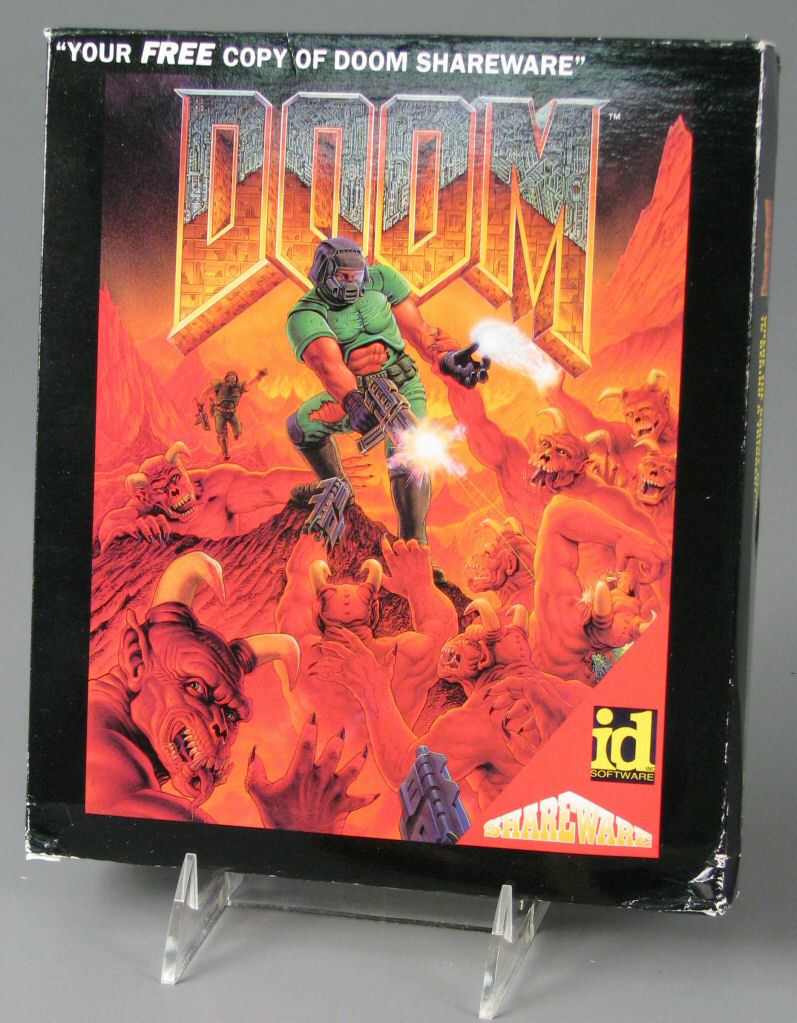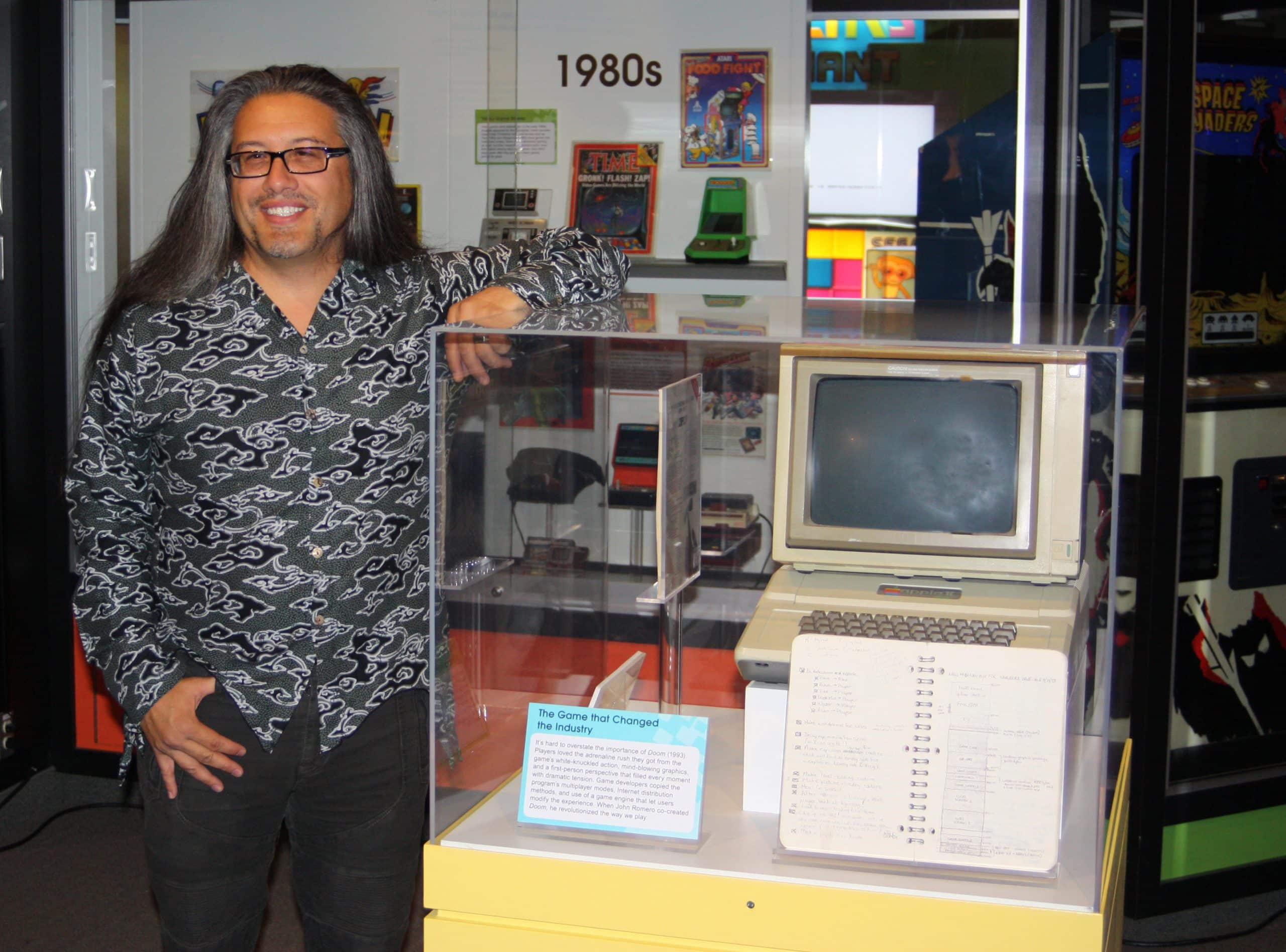ICHEG collects a vast array of materials. Sometimes they come in groups of thousands, like the archives of the Atari Coin-Op divisions we acquired, and sometimes they come in ones and twos, like John Romero’s first Apple II+ computer and design notebook that he donated. John recently joined us in installing these items in The Strong’s eGameRevolution exhibit.
 John transformed video games through his work on Doom, which, when id Software released the title in 1993, brought the first-person shooter genre to new artistic levels and pioneered the implementation of a game engine that let players modify the program. Doom also popularized Internet-based distribution models by using id Software’s shareware to promote and sell the game. Long before programming Doom, however, John cut his coding teeth on the Apple II+.
John transformed video games through his work on Doom, which, when id Software released the title in 1993, brought the first-person shooter genre to new artistic levels and pioneered the implementation of a game engine that let players modify the program. Doom also popularized Internet-based distribution models by using id Software’s shareware to promote and sell the game. Long before programming Doom, however, John cut his coding teeth on the Apple II+.
During the installation, Romero shared his memories of the Apple II+. He began programming on his school’s computers, but in 1981, his father gave him the Apple II+ computer, a 64k language card, a Microsoft Softcard that allowed the computer to run the CP/M operating system, a dot-matrix printer, a color Amdek monitor, and a Videoterm 80-column card. These generous gifts proved worth the expense as they launched John on a lifetime of programming.
In 1982, John’s parents gave him Roger Wagner’s Assembly Line: The Book, which helped him progress from BASIC to the more powerful 6502 Assembly programming language. When John received the book, he was somewhat familiar with Assembly through the Apple II+ Reference Manual, so “After about 3 pages of Roger’s book,” he said, “I knew how to code 6502. It was awesome. This happened during Christmas 1982. Unfortunately, we were moving to England on January 1, 1983, and everything, including the computer, was going BY BOAT to England. It was going to take 6 months for our stuff to arrive.”
Throughout the long hiatus without a computer, John wrote down his games in notebooks like the one now on display at The Strong. When the computer finally arrived, he recalled, “The summer of 1983 was bliss, programming from 8 a.m. until 2 a.m. every day. I wrote so many of my first good games that year, and several of them were published years later, in 1987.” Three of John’s early games—Major Mayhem, City Centurian, and Treasure Dive—appeared on successive December cover issues of Nibble, a magazine for Apple enthusiasts. His notebooks document this fertile period when he dashed off snatches of code or scribbled down ideas for games, often writing original game ideas opposite pages of notes for games he was playing such as Zork, King’s Quest, and Ultima 4.
 Eventually John moved on to the more powerful Apple IIe and programmed on that until 1991. Doom followed two years later, but the foundation had been laid a decade earlier when he served his long apprenticeship in game design with his beloved Apple II+.
Eventually John moved on to the more powerful Apple IIe and programmed on that until 1991. Doom followed two years later, but the foundation had been laid a decade earlier when he served his long apprenticeship in game design with his beloved Apple II+.
The Strong is honored to preserve and display the computer and one of the notebooks that launched the career of John Romero, a master of the craft of game design.
By Jon-Paul Dyson, Director, International Center for the History of Electronic Games and Vice President for Exhibits
 Hours 10 a.m.–5 p.m. | Fri. & Sat. till 8 p.m.
Hours 10 a.m.–5 p.m. | Fri. & Sat. till 8 p.m.